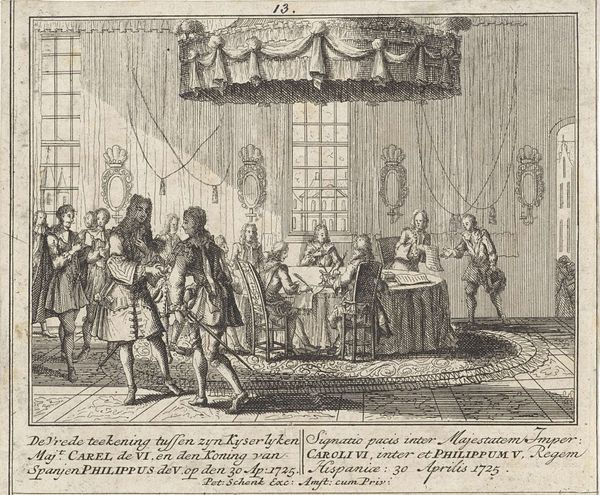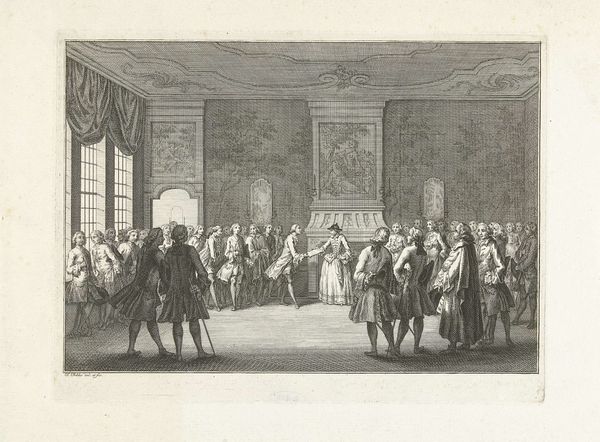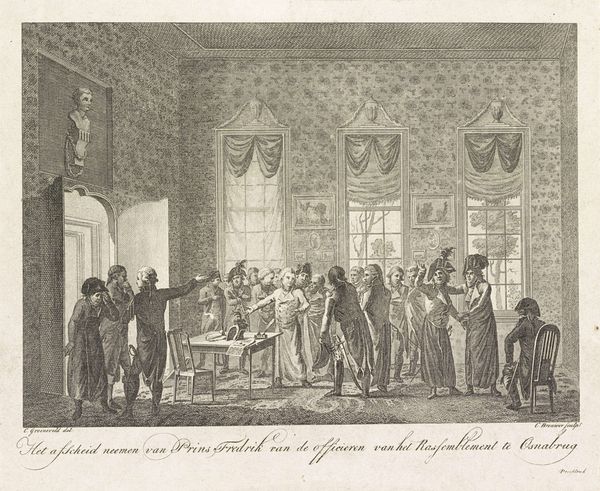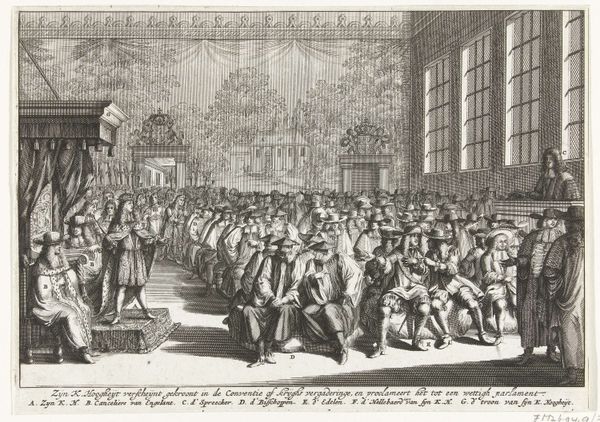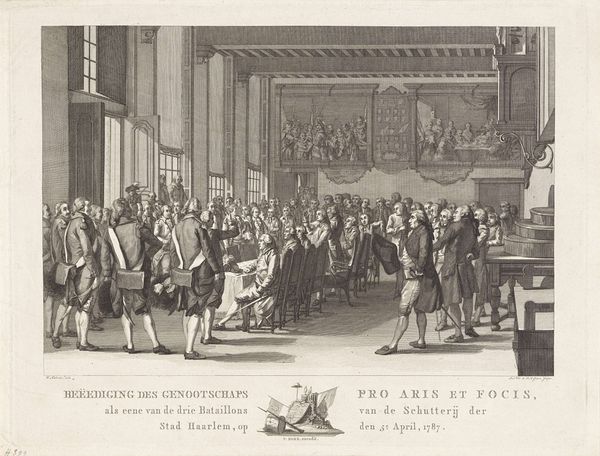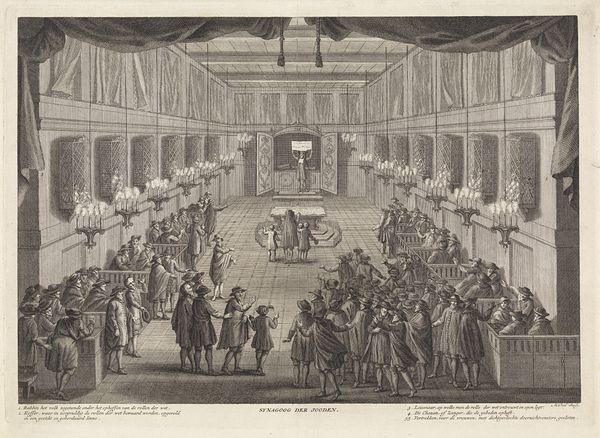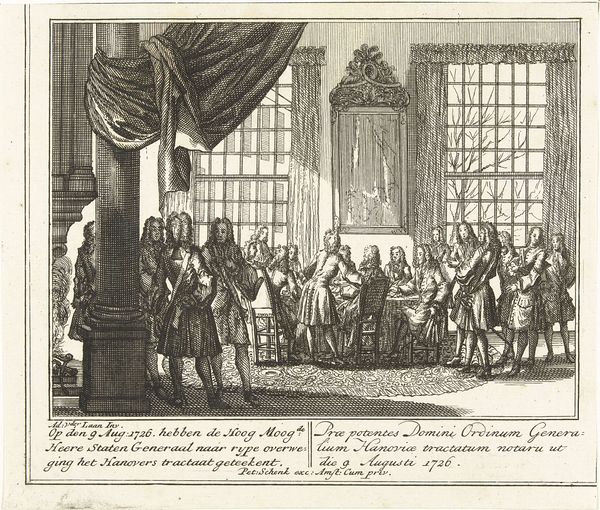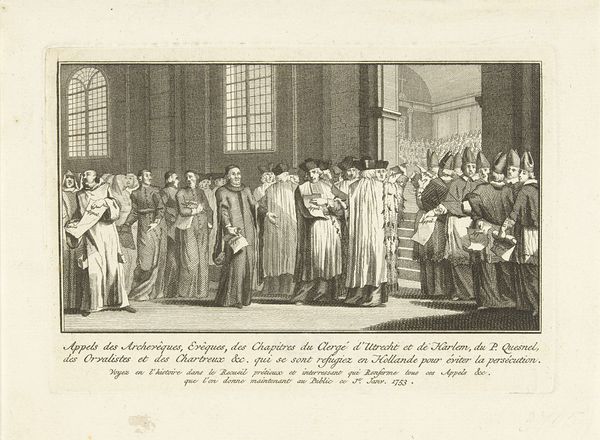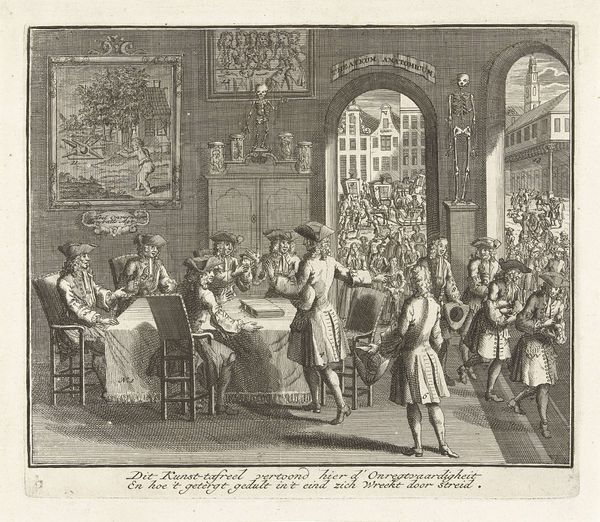
print, engraving
#
neoclacissism
#
narrative-art
# print
#
old engraving style
#
figuration
#
line
#
history-painting
#
academic-art
#
engraving
Dimensions: height 203 mm, width 287 mm
Copyright: Rijks Museum: Open Domain
This print, made in 1798 by an anonymous artist, captures General Daendels’ coup d’état. It’s a relatively small work, made using the technique of etching. The fine, precise lines were achieved by drawing into a wax-coated metal plate, which was then submerged in acid. This biting process creates grooves that hold ink, allowing the image to be transferred onto paper through a printing press. The linear quality of the print emphasizes the rigid formality of the depicted scene, with its neat rows of soldiers and stern-faced officials. Given the political subject matter, the choice of a reproducible medium like etching is significant. Prints could be circulated widely, influencing public opinion and solidifying narratives of power. The precision and detail achieved through etching lend an air of authority to the image, reinforcing the message of a decisive and controlled takeover. The artist's meticulous technique underscores how materials and making processes are integral to understanding the social and political impact of this historical artwork.
Comments
No comments
Be the first to comment and join the conversation on the ultimate creative platform.
